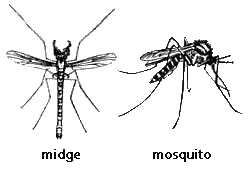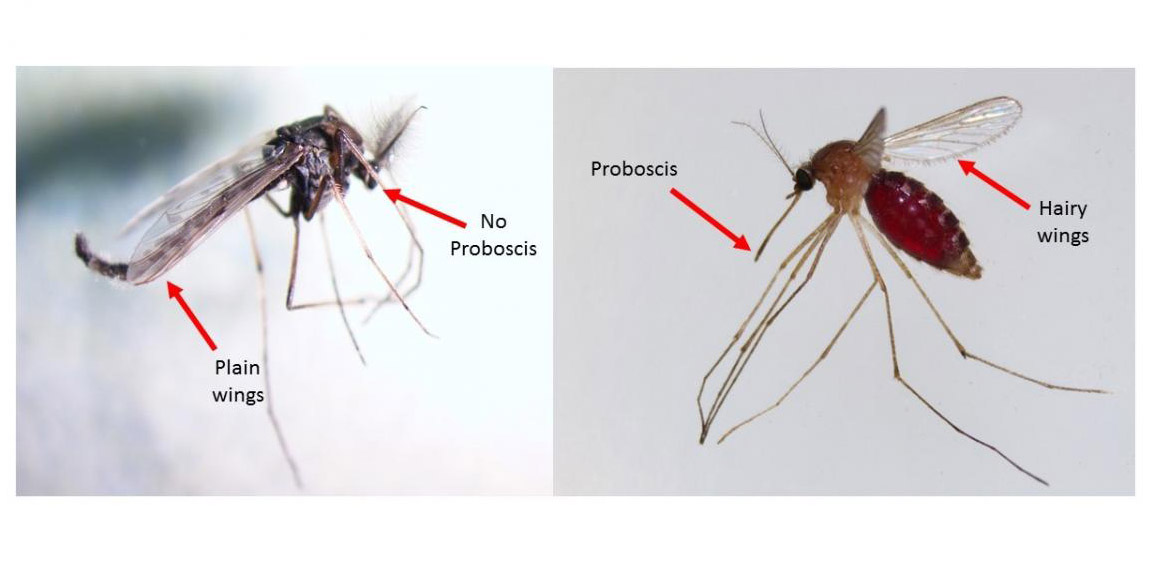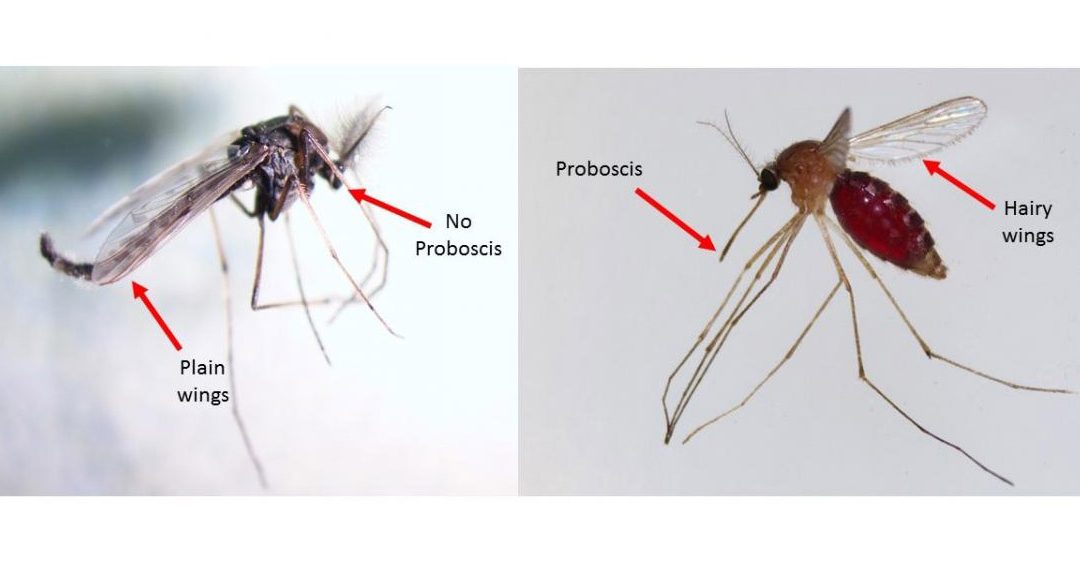Some of you may have noticed a large number of insects in the air lately. Most of these are midges; harmless creatures that are a natural part of the ecosystem. But what is a midge and why are they here in such large numbers this year?

Midges are small insects that look an awful lot like mosquitoes until you look at them up close. They both have long bodies and long narrow wings, but there are some key differences that set midges apart. If you were to get out a magnifying glass and look at a mosquito, you would see that the edges of the wings of a mosquito are covered in scales that look like fine hairs. You would also be able to see that mosquitoes have a long needle-like mouth (a proboscis). Midges have neither of these. Their wings look like barren panes of glass and they don’t have the long proboscis which means that they cannot bite. This is why midges are considered harmless and why we don’t control their numbers.

Comparison of a midge (left) and mosquito (right)
So why are there so many midges right now? Midges live most of their lives as worm-like larvae at the bottom of water sources but every spring, if the weather is warm and there is a lot of fresh water available, they will make the transition to adults. The midge larvae drift slowly up from the bottom and rest on the water surface to pupate and prepare to take to the sky. As pupae, they are an excellent food source for fish, frogs, newts, and even other insects like water boatmen, dragonflies and water striders. When they become adults, they lose the ability to eat or drink and will live only 3 days before they starve to death. To maximize the chance of finding a mate in that short time, the midges will rise together in huge numbers called “mating swarms” which may be blown into shore to rest on buildings, windows, or plants. They are particularly attracted to light sources so porches with lights are a favorite place to hang out!

After the incredible rains we got this year, areas that were previously dry have fresh water again which means the midges have risen in larger numbers than we’re used to seeing. Don’t despair though! The swarms will die out in just a few weeks and in the meantime, they’re an incredible source of food for the babies of birds like swallows, swifts and hummingbirds.
Read more: Bloodworm Facts (Everything You Need to Know)
